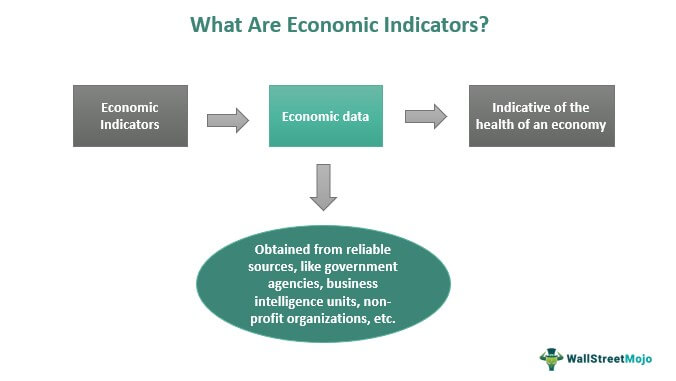
Land loans are a specialized form of financing designed specifically for purchasing land, whether for residential, commercial, or agricultural purposes. Unlike traditional home mortgages, which are secured by the property itself, land loans are often considered riskier by lenders due to the absence of a structure that can be used as collateral. This risk is reflected in the terms and conditions of the loan, which can vary significantly based on the type of land being purchased and the intended use.
Investors must understand these nuances to navigate the complexities of land financing effectively. When considering a land loan, it is crucial to recognize the different categories of land available for purchase. Raw land, which is undeveloped and lacks utilities or infrastructure, typically presents the highest risk and may require a larger down payment and higher interest rates.
Conversely, improved land, which has access to utilities and is ready for construction, may offer more favorable loan terms. Additionally, the purpose of the land—whether for investment, development, or personal use—can influence the loan’s structure and repayment options. Understanding these distinctions is essential for making informed decisions in the land acquisition process.
Key Takeaways
- Land loans are used to finance the purchase of land for investment or development purposes.
- Types of land loans include raw land loans, lot loans, and construction loans, each with different terms and requirements.
- The application process for a land loan involves providing detailed information about the land, your financial situation, and your plans for the property.
- When choosing a lender for your land loan, consider factors such as interest rates, loan terms, and the lender’s experience with land financing.
- Using a land loan for investment can provide benefits such as potential appreciation and income generation, but it also carries risks such as market fluctuations and development challenges.
Types of Land Loans Available for Investors
Investors have several options when it comes to securing financing for land purchases. One of the most common types is a raw land loan, which is specifically designed for purchasing undeveloped land. These loans often come with higher interest rates and require larger down payments due to the increased risk associated with financing property that lacks existing infrastructure.
Lenders may also impose stricter credit requirements for raw land loans, making it essential for investors to have a solid financial profile. Another option is an improved land loan, which is intended for parcels that have been developed to some extent, such as those with access to utilities or roads. These loans typically offer better terms than raw land loans because the property has a higher potential for development and resale value.
Additionally, construction loans can be utilized when investors plan to build on the land immediately after purchase. These loans provide funds not only for acquiring the land but also for financing the construction of a building or other improvements. Each type of loan has its own set of requirements and implications, making it vital for investors to assess their specific needs and financial situations before proceeding.
The Application Process: Steps to Securing a Land Loan

Securing a land loan involves several steps that require careful planning and preparation. The first step is to conduct thorough research on potential lenders who specialize in land financing. This can include banks, credit unions, and private lenders.
Each lender may have different criteria for approval, so it is essential to compare their offerings and understand their specific requirements. Once a suitable lender is identified, the next step is to gather necessary documentation, which typically includes financial statements, tax returns, credit reports, and details about the land being purchased. After assembling the required documentation, investors will need to complete a loan application.
This application will require detailed information about the borrower’s financial history, including income, debts, and assets. Lenders will also want to know about the intended use of the land and any plans for development. Once submitted, the lender will review the application and conduct an appraisal of the property to determine its value.
This appraisal process can take time and may involve additional inspections or assessments. Upon approval, borrowers will receive a loan estimate outlining the terms and conditions of the loan, including interest rates and repayment schedules.
Factors to Consider When Choosing a Lender for Your Land Loan
| Factors to Consider | Description |
|---|---|
| Interest Rate | Compare the interest rates offered by different lenders to find the best deal. |
| Loan Terms | Consider the length of the loan and the flexibility of the repayment terms. |
| Down Payment | Check the down payment requirements and see if it fits your financial situation. |
| Loan Fees | Be aware of any origination fees, appraisal fees, or other charges associated with the loan. |
| Customer Service | Research the lender’s reputation for customer service and responsiveness. |
| Experience with Land Loans | Choose a lender who has experience and expertise in providing land loans. |
Choosing the right lender for a land loan is a critical decision that can significantly impact an investor’s financial future. One of the primary factors to consider is the lender’s experience with land loans specifically. Not all lenders are familiar with the nuances of financing land purchases, so it is beneficial to seek out those who specialize in this area.
A lender with expertise in land financing will be better equipped to provide guidance on loan options and help navigate potential challenges. Another important consideration is the interest rates and fees associated with the loan. Investors should compare offers from multiple lenders to ensure they are getting competitive rates.
Additionally, understanding the total cost of borrowing—including origination fees, closing costs, and any prepayment penalties—is essential for evaluating the overall affordability of the loan. Customer service and responsiveness are also key factors; working with a lender who communicates effectively can make the application process smoother and less stressful.
Benefits and Risks of Using a Land Loan for Investment
Investing in land through a land loan can offer several advantages. One significant benefit is the potential for appreciation in property value over time. As urban areas expand and demand for real estate increases, undeveloped land can become more valuable, providing investors with substantial returns on their investment.
Additionally, purchasing land can serve as a hedge against inflation; as prices rise in other sectors, land values often follow suit. However, there are inherent risks associated with using a land loan for investment purposes. One major risk is that raw land does not generate income until it is developed or sold.
This lack of cash flow can strain an investor’s finances if they are unable to cover loan payments while waiting for appreciation or development opportunities. Furthermore, zoning regulations and environmental restrictions can limit how land can be used or developed, potentially impacting its value and marketability. Investors must conduct thorough due diligence to mitigate these risks effectively.
Maximizing Your Investment: Tips for Using Land Loans Effectively

To maximize the potential of a land loan investment, investors should adopt strategic approaches throughout their acquisition and development processes. One effective strategy is to conduct comprehensive market research before purchasing land. Understanding local real estate trends, zoning laws, and future development plans can provide valuable insights into which areas are likely to appreciate in value.
This knowledge allows investors to make informed decisions about where to invest their resources. Another tip is to consider leveraging partnerships or joint ventures when acquiring larger parcels of land or undertaking significant development projects. Collaborating with other investors or developers can spread financial risk while also pooling resources and expertise.
Additionally, maintaining open lines of communication with lenders throughout the investment process can help address any challenges that arise and ensure that financing remains aligned with project goals.
Case Studies: Successful Investments Made Possible with Land Loans
Examining real-world examples can provide valuable insights into how land loans can facilitate successful investments. One notable case involved an investor who purchased a 10-acre parcel of raw land in an emerging suburban area using a raw land loan. By conducting thorough market research and identifying growth trends in the region, the investor was able to secure financing at a competitive interest rate despite the property’s undeveloped status.
After holding onto the land for several years while local infrastructure improved, they ultimately sold it at a significant profit as demand surged. Another example features a group of investors who pooled their resources to acquire a larger tract of improved land near a growing urban center. Utilizing an improved land loan allowed them to finance both the purchase and subsequent development of residential properties on the site.
By carefully planning their project and working closely with local authorities to navigate zoning regulations, they successfully developed a community that met local housing needs while generating substantial returns on their investment.
The Future of Land Loans: Trends and Opportunities for Investors
As real estate markets continue to evolve, so too do opportunities within the realm of land loans. One emerging trend is the increasing interest in sustainable development practices among investors. As environmental concerns gain prominence, many investors are seeking out parcels of land that can be developed with eco-friendly practices in mind.
This shift not only aligns with consumer preferences but also opens up new avenues for financing through green loans or incentives offered by government programs aimed at promoting sustainable development. Additionally, advancements in technology are reshaping how investors approach land acquisition and financing. Online platforms that facilitate peer-to-peer lending are becoming more prevalent, allowing investors to access alternative sources of funding outside traditional banking institutions.
These platforms often provide more flexible terms and faster approval processes, making it easier for investors to secure financing for their projects. In conclusion, understanding the intricacies of land loans is essential for investors looking to capitalize on opportunities in real estate markets. By exploring various types of loans available, navigating the application process effectively, and considering key factors when choosing lenders, investors can position themselves for success in this unique segment of real estate investment.
FAQs
What is a land plus loan?
A land plus loan is a type of loan that combines financing for both the purchase of land and the construction of a new home. This type of loan allows borrowers to secure funding for both the land and the building of a home in one loan package.
How does a land plus loan work?
With a land plus loan, the borrower can purchase a piece of land and then use the same loan to finance the construction of a new home on that land. The loan typically has two phases: the land purchase phase and the construction phase. During the land purchase phase, the borrower uses the loan to buy the land. Once the land is purchased, the loan transitions into the construction phase, where the funds are used to build the home.
What are the requirements for a land plus loan?
The requirements for a land plus loan can vary depending on the lender, but generally, borrowers will need to have a good credit score, a stable income, and a down payment for the land purchase. Lenders may also require detailed plans and cost estimates for the construction of the home.
What are the benefits of a land plus loan?
One of the main benefits of a land plus loan is that it provides a single loan package for both the land purchase and the construction of a new home, simplifying the financing process for borrowers. Additionally, borrowers may be able to secure more favorable terms and interest rates compared to obtaining separate loans for land and construction.
What are the potential drawbacks of a land plus loan?
One potential drawback of a land plus loan is that it can be more complex and may require more documentation and planning compared to traditional mortgage loans. Additionally, borrowers may face stricter requirements and higher interest rates due to the increased risk for the lender.










